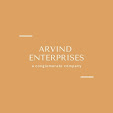Market Size & Growth Forecasts for mental health in India.
MindBro
The Indian mental health market is substantial and growing. Industry analysis values it at ~USD 20.17 billion in 2024, expanding to USD 27.35 billion by 2033 (CAGR ~3.2%). Growth drivers include rising awareness, reduced stigma, urban stress, and digital health investments. The online/digital segment is much smaller today but expanding rapidly: the online mental health market was about USD 133.5 million in 2024 and is projected to reach USD 451.7 million by 2033 (CAGR ~13.4%). This reflects accelerating internet/mobile adoption and teletherapy uptake, especially in underserved areas.
Figure: India mental health screening (“assessment”) market (USD millions), showing growth from 2018 ($XX) to $129.2M in 2023 and projected $266.1M by 2030. The mental health screening/assessment segment alone is estimated at USD 129.2M in 2023, doubling to ~USD 266.1M by 2030 (CAGR ~10.9%). This highlights growing demand for preventive diagnostics and early intervention. In contrast, therapy and counseling services (outpatient and inpatient care) still constitute the majority of spending: for example, inpatient treatment accounts for ~43.5% of hospital-based mental health services (2024).
Segment 2023/2024 Value 2030/2033 Forecast CAGR
Total mental health market USD 20.17 B (2024) USD 27.35 B (2033) 3.18% (2025–33)
Online mental health market USD 133.5 M (2024) USD 451.7 M (2033) 13.40% (2025–33)
Mental health screening/assessment market USD 129.2 M (2023) USD 266.1 M (2030) 10.9% (2024–30)
Segmentation by Delivery, Customer, and Service Type
By Delivery: The market divides into offline (in-person clinics, hospitals, community centers) versus online (teletherapy apps, helplines, chatbots). Currently, offline care dominates total revenues, supported by established hospitals (e.g. Fortis, Apollo) and clinics. However, online delivery is the fastest-growing channel. Telepsychiatry guidelines and smartphone access have enabled chat/video consultations. Hybrid models (e.g. initial app screening followed by live therapy) are emerging.
By Customer: Key user segments include:
Students and Youth: Post-COVID-19, schools and colleges are focusing on well-being. The Education Ministry’s Manodarpan initiative provides psychosocial support and helplines for students. Private platforms also target colleges (e.g. college partnerships) and youth apps (often English/Hindi).
Working Professionals and Corporates: Corporates increasingly offer Employee Assistance Programs and wellness budgets. Surveys report ~80% of employees face mental health challenges, prompting companies to provide counseling, 24/7 chat lines, and “mental health days”. However, ~70% of firms still exclude mental care from insurance, indicating a gap. Employers in tech/finance are early adopters of such benefits.
Government and NGOs: Public-sector programs (DMHP, tele-helplines) target the general population. CSR initiatives by large companies fund community helplines, NGO programs and school mental health camps. Programs like the National Tele-MANAS (Ministry of Health) deliver crisis support via a 24×7 toll-free helpline (14416) in 20 languages.
Other groups: Specialized segments include women (postpartum care), elderly, marginalized communities, and rural populations. These groups are currently underserved (see below) and represent target opportunities.
By Service Type: Services can be categorized as Preventive (wellness/awareness), Crisis (acute intervention), and Ongoing (therapeutic care).
Preventive: Screenings, psychoeducation, resilience training and early counseling fall here. Prevention is underdeveloped in India, but rising awareness (e.g. school programs) is expanding this segment.
Crisis: Emergency services include suicide hotlines, acute inpatient care, and emergency counseling. Initiatives like Tele-MANAS and Sukoon (24×7 crisis helplines) address immediate needs. These are largely government/NGO-run and remain small but essential.
Ongoing Care: The largest segment by revenue. This includes regular therapy/counseling sessions (outpatient or online), psychiatric treatment, and support groups. Inpatient psychiatric care is significant (43.5% share in hospitals). Ongoing care also includes long-term medication management (mostly delivered in hospitals/clinics).
Major Industry Trends
Telehealth & Digital Platforms: Telepsychiatry and mental wellness apps are accelerating. The government’s Tele-MANAS network now spans 53 centers across India (offering services in 20 languages). Private startups and apps (e.g. Wysa, InnerHour, MindPeers) leverage AI and chatbots for scalable support. Growing smartphone and internet penetration, especially in tier-2/3 cities, is bridging access gaps: rural/remote individuals can now consult therapists remotely. For example, IMARC notes teleconsultations, AI-driven tools and multilingual apps are “bridging gaps in mental health services, especially in underserved areas”.
Destigmatization and Awareness: Public perception is shifting. Nationwide campaigns, celebrity endorsements, and social media dialogue have gradually reduced stigma, leading more people to seek help openly. Schools, colleges and workplaces now openly promote mental wellness (e.g. “wellness weeks”, EAPs). Survey data indicates younger generations increasingly view therapy as acceptable. This cultural change is fueling demand: more people (urban and semi-urban) recognize mental health as part of overall well-being.
Regulatory & Policy Changes: The Mental Healthcare Act 2017 was a landmark, legally requiring insurers to cover mental health on par with physical health. IRDAI has directed all insurers to comply, though enforcement lags and many still exclude existing conditions. In 2020, India issued Telemedicine Practice Guidelines, including telepsychiatry, legitimizing online consultations (MoHFW/IMS/IPS guidelines). Government programs (NMHP/DMHP) have expanded digital academies: e.g. 42,488 mental health professionals have been trained via online programs since 2018. New helplines (Tele-MANAS, KIRAN) and insurance initiatives aim to institutionalize mental healthcare.
School & Workplace Mental Health: Education and corporate sectors are integrating mental health. The Manodarpan initiative (Ministry of Education) provides student counseling and a national helpline. Private ed-tech and college campuses also start on-campus counseling centers. In industry, companies now view mental health as a business issue: many introduce mindfulness programs, counseling providers, and flexible policies to boost morale. Corporate wellness vendors (e.g. YourDOST) package mental health subscriptions for employees. This institutional focus is a rising trend in India.
Leading Players and Initiatives
Hospitals & Clinics: Large healthcare chains (Fortis, Apollo, Max Healthcare, NIMHANS, AIIMS, etc.) offer psychiatry and psychology services. For example, Fortis/Apollo have psychiatric departments and telepsychiatry facilities. NIMHANS is also involved in outreach (ICMR partnerships). These institutions dominate inpatient care and serious mental illness treatment.
Digital Startups/Platforms: Numerous homegrown startups target therapy/counseling online. Key names include YourDOST (online counseling for students/professionals), BetterLYF (24×7 chat-based therapy), Wysa (AI chatbot with human coaches), InnerHour (Amaha) (self-help modules + therapists), Practo (health aggregator with mental health specialists), and MindPeers (teletherapy platform). They differentiate via digital tools (AI, chat), multilingual support, and flexible pricing. Some (e.g. Wysa) focus on anonymity via bots; others provide video/audio therapy.
CSR/Nonprofits: NGOs and CSR-funded programs play a major role in underserved areas. Organizations like Sangath, The Banyan, and Manas (Govt. NGO) run community programs. LGBT-focused groups (Humsafar Trust, Sappho for Equality) provide culturally-competent counseling. Grassroots collectives are emerging (e.g. Ya-All in NE India, Vikalp in Gujarat) to support queer youth and other marginalized groups. Many startups and companies also launch CSR campaigns (e.g. free webinars for schools, toll-free student helplines).
Government Programs: The central government has launched several initiatives:
Tele-MANAS (National Tele-Mental Health Programme): 53 call centers across India, 24/7 helpline 14416 (20 languages), and a mobile app (Oct 2024). By Feb 2025 it had handled ~1.8 million calls. It also subsumed the earlier KIRAN helpline.
District Mental Health Programme (DMHP): Operational in 767 districts, DMHP funds mental health in primary care.
Ayushman Bharat – Health & Wellness Centres (HWCs): Nearly 1.7 lakh primary clinics now include basic mental health services (counseling, medicines) under Ayushman Bharat.
Education Ministry’s Manodarpan: National helpline and online resources for student mental health.
Skill-building: 25 Centres of Excellence and 47 new PG departments have been added to train more specialists. Over 42,000 professionals (counselors, psychiatrists) have been trained via digital programs since 2018.
Consumer Behavior and Pricing
Willingness to Pay: Traditional therapy is relatively expensive by Indian standards. A one-hour session typically costs ₹1,000–2,000 (USD 12–25), and recommended frequency (weekly/monthly) makes it a significant recurring cost. As a result, many Indians prefer low-cost or free alternatives when possible. Younger, urban professionals or students may be willing to pay for privacy and convenience. Digital platforms often offer a freemium model: free basic content/chats with an option to pay for expert sessions. Corporates may subsidize care through EAP budgets. However, out-of-pocket payment is the norm (70% of firms still don’t include mental care in insurance), indicating cost-sensitivity among users.
Preferred Channels: Mental health seekers typically begin with online/self-help resources or general practitioners, then escalate to specialists if needed. Studies note that anonymity and convenience drive people to teletherapy (chat/video). Social media and influencer content also serve as first touchpoints. In lower-tier cities, word-of-mouth and local clinics are still common. Government helplines (Tele-MANAS 14416) have become a major channel for crisis counselling (1.8M calls in ~1 year). Apps and chatbots (e.g. Wysa) are growing popular among tech-savvy youth.
Languages and Vernacular Gaps: A major barrier is language. Most professional therapists and apps operate in English or Hindi; many Indians lack vocabulary in their own mother tongues to express mental health concepts. For example, terms like “anxiety” and “depression” often have no direct equivalents in regional languages. The Tele-MANAS service addresses this by providing support in 20 languages. Several startups are now incorporating regional languages, but gaps remain. Content and counselling in Marathi, Tamil, Bengali, etc. are limited, indicating a strong opportunity to localize services.
Opportunities & Unmet Needs
Tier-2/3 and Rural Markets: Over 65–70% of Indians live in non-metro areas, yet access to mental health professionals there is minimal. There is strong unmet need in small cities and villages: stigma is often higher, awareness lower, and specialists scarce. However, expanding smartphone penetration and government programs offer openings. Teletherapy can deliver care to tier-2/3 users at scale. Creating low-cost, vernacular self-help tools (apps, audio content) and training local health workers (e.g. via Sangath’s CHW model) would bridge gaps. There’s particular demand for affordable, anonymous services (e.g. chatbots, peer support) that overcome stigma and travel barriers.
Underserved Groups: Beyond geography, certain communities face acute barriers. LGBTQIA+ individuals experience higher mental distress and discrimination, yet lack access to affirming care. Community-led orgs (e.g. Sappho, Humsafar, Ya-All) provide queer-friendly counseling, but mainstream providers rarely specialize in these needs. Women in conservative or rural areas often have limited agency to seek help; maternal mental health (postpartum depression) is under-addressed. Homeless, elderly, tribal populations also have minimal services. Language and cultural adaptation is needed (e.g. content for tribal dialects or culturally taboos). There is an opportunity for culturally-tailored interventions (art therapy, group support) and NGO partnerships to reach these groups.
Preventive & Wellness Demand: More individuals are now seeking preventive care and stress-management, not just crisis therapy. Corporate stress-management workshops, school mindfulness curricula, and wellness apps (yoga, meditation) are burgeoning markets. Startups could offer subscription-based wellness programs, or B2B packages for companies and schools focused on prevention.
Risks & Barriers
Stigma: Deep-rooted stigma remains the foremost barrier. Many Indians still regard mental illness as a “taboo” or moral failing. This leads to reluctance in seeking professional help, especially among older and rural populations. While awareness is growing in urban centers, overcoming stigma requires sustained public education and credible branding.
Affordability: High cost of personalized therapy limits usage. With most care out-of-pocket, lower-income users are left out. Even digital services must balance quality with low pricing. Insurance coverage is improving (IRDAI mandates parity), but current plans often exclude mental illness or charge high premiums. Cost remains a systemic barrier.
Limited Professional Supply: India has very few specialists (0.75 psychiatrists per 100k people, far below WHO norms). There are also quality concerns: the path to licensing for psychologists is minimal (degree graduates can practice immediately), so inconsistent training and ethics lapses can occur. This scarcity and variable quality can deter trust in services.
Digital Literacy & Infrastructure: Although internet access is rapidly growing, significant portions of the population (especially elderly or rural) lack digital literacy or stable connections. Mental health platforms requiring smartphones may exclude these users. Government internet efforts (e.g. public Wi-Fi) help, but uneven connectivity and tech skills remain obstacles for online-only models.
Regulatory Uncertainty: The teletherapy market is lightly regulated. There are guidelines, but no strong enforcement of standards for online providers. Privacy and data protection (HIPAA-like policies) are not yet robustly enforced in India. Additionally, advertising/marketing claims in mental health are a gray area. Startups must navigate evolving regulations (e.g. IRDAI notifications, therapy quality standards) or risk legal issues.
Strategic Recommendations for MindBro
MindBro, a digital-first mental health startup targeting B2C and B2B (schools, colleges, workplaces) with potential government/CSR partnerships, should adopt a multi-pronged strategy:
Go-to-Market Strategy: Position MindBro as a trusted, accessible mental health brand for both individuals and institutions. For B2C, focus initially on urban Millennials/Gen Z who are more open to digital therapy. Leverage social media and influencer campaigns (in English and regional languages) to raise awareness. Offer an easy-to-use mobile platform with self-assessment quizzes (preventive) and content. For B2B, target companies and educational institutions: pitch MindBro as an employee/student well-being partner. Develop packaged offerings (e.g. campus counseling programs or corporate EAP tie-ins) with case studies and ROI metrics (e.g. reduced absenteeism). Engage local chapters of professional bodies (Psychiatric Society of India, counseling associations) for referrals.
Service Model (Productization vs 1:1 Care): Blend digital products with personalized care. Provide a layered model:
Self-Help Tools: Guided self-assessment tests, psychoeducational videos/articles, mindfulness modules (free tier). This “productizes” basic mental wellness and reduces cost per user. It addresses mild concerns and funnels serious cases upward.
Group and Peer Sessions: Weekly online support groups or workshops (branded webinars, peer circles) are intermediate offerings – lower-cost than therapy, but deeper than static content. These can be productized as subscription-based “MindBro Circles” for stress management, exam anxiety, etc.
On-Demand 1:1 Therapy: Premium tier with chat/video counseling by licensed professionals. Enable both scheduled appointments and instant chat (for moderate issues). Ensure therapists are well-vetted (qualifications displayed) to build trust. Use technology (AI-based triage/bot) to match users to therapists and handle basic queries. For institutions, offer dedicated counselor (shared across employees/students) as part of a subscription.
AI/Chatbot Support: Integrate an AI chatbot for 24×7 basic support (like Wysa) to handle mood logging and crisis advice. This addresses “anytime” access and anonymity needs, encouraging usage even before human help is sought.
Pricing Tiers: Use tiered pricing aligned with value and paying capacity:
Free/Freemium Tier: Free access to basic self-assessments, a limited number of chat sessions with a bot, and a library of content. This lowers entry barriers and attracts high-volume users (especially price-sensitive students or rural users).
Standard Tier (Subscription): Monthly fee (~₹199–499) for expanded self-help modules, group sessions, and a fixed quota of live counselor interactions (text/chat). This can be pitched to young professionals or colleges (as campus licenses).
Premium Tier: Higher fee (~₹999+ per month or per-session charge) for unlimited counselor access (video sessions) and personalized care plans. Suitable for corporates (per-employee licensing) and affluent B2C clients.
B2B/EAP Plans: Offer enterprise/workplace subscriptions (per-user per-month pricing) based on employee count and service levels (e.g. basic vs premium access). Include options for on-site workshops or mental health days, sponsored by the employer/CSR. For schools/colleges, offer campus programs (annual contract for unlimited student access and teacher training).
Government/CSR Partnerships: Propose CSR projects or government tie-ups at highly subsidized rates or revenue-sharing. For example, integrate MindBro’s platform into state health portals or receive CSR grants to deploy in rural schools. Emphasize scalability and impact metrics to secure funding.
Partnerships:
Healthcare and Insurance: Collaborate with private health insurers to include MindBro services as a rider or wellness benefit (aligning with IRDAI’s mental health coverage push). Partner with corporate wellness vendors and hospital chains for referrals.
Educational Institutions: Tie up with school boards and universities to be their official counseling partner. Leverage the Manodarpan framework or teacher networks to reach students. Offer co-branded mental health weeks and integrate with student health services.
Technology Platforms: Pre-install or co-market on popular apps (JioHealth, Paytm Health, etc.) to reach non-English speakers. Use Google/Facebook grants to run mental health awareness campaigns targeted by region/language.
NGOs and Community Orgs: Collaborate with NGOs (Sangath, Banyan) for rural outreach projects, and queer/LGBTQIA+ NGOs (Humsafar, Sappho) for specialized content, leveraging their trust. Through CSR programs, partner with large corporations to fund free counseling camps in tier-2/3 towns.
Government: Align with schemes (e.g. DMHP, Manodarpan) to become an approved service provider. For example, offer MindBro’s platform as the tele-counseling interface for state helplines. Position as a public-private partner to access funding and credibility.
Content & Marketing Strategy:
Localized & Inclusive Content: Produce content in multiple Indian languages (Hindi, Tamil, Marathi, Bengali, Telugu, etc.) to fill vernacular gaps. Use voice/visual media for low-literacy users. Incorporate culturally relevant examples and local idioms to explain concepts.
Educational Campaigns: Create a steady stream of blog posts, videos, webinars on mental wellness topics (stress management, exam anxiety, work-life balance). Leverage social media influencers (youth icons, local celebrities) to destigmatize mental health. Use the “new vocabulary” approach – introduce simple terms in local languages as in [51] to make discussion accessible.
Engagement & Retention: Use gamification (mood tracking streaks, badges for completing courses) and community forums to keep users engaged. Publish anonymous success stories and testimonials to build social proof (with permission). Implement regular surveys to adapt content to user needs.
Content Partnerships: Work with publishers and media to include MindBro content (e.g. syndicated columns in local newspapers, radio spots in vernacular). This raises brand awareness and credibility.
Trust-Building Initiatives: Trust is paramount in mental health:
Professional Credibility: Clearly display therapist credentials and affiliations. Partner with recognized mental health institutions (e.g. endorsement by IAHAM or local medical councils). Possibly staff the advisory board with known psychiatrists/psychologists to reassure users of quality (addressing [58]’s concerns about unregulated practitioners).
Data Privacy & Ethics: Adopt robust privacy policies (GDPR/PDPA-level) and communicate them clearly. Highlight confidentiality (end-to-end encryption on chats, anonymous usage options) to alleviate privacy fears.
Transparency: Be clear about pricing (no hidden costs). Use evidence-based treatment frameworks (CBT, DBT, etc.) and cite credible sources for interventions. Regularly publish impact metrics (e.g. “X users helped”, survey satisfaction scores) to demonstrate effectiveness.
Accreditations & Certifications: Seek accreditation from bodies like the Quality Council of India’s Healthcare Sector or mental health associations. Obtain ISO certifications (e.g. ISO 9001 for quality) if relevant. This lends legitimacy.
Community Outreach: Engage in CSR-style free initiatives (free mental health camps, pro-bono counseling for disadvantaged groups) to build goodwill. Also, participate in public forums, health fairs and academic conferences to position MindBro as an industry leader.
By combining digital innovation with trusted human care, affordable pricing tiers, strategic partnerships, and culturally-tailored outreach, MindBro can capture India’s growing demand for mental health services. A phased roll-out (starting with English/Hindi content and urban pilots, then expanding languages and B2B programs) is advisable. Monitoring key metrics (user growth, retention, satisfaction) and iterating the model will ensure MindBro remains responsive to India’s dynamic mental health landscape.













Comments
Post a Comment